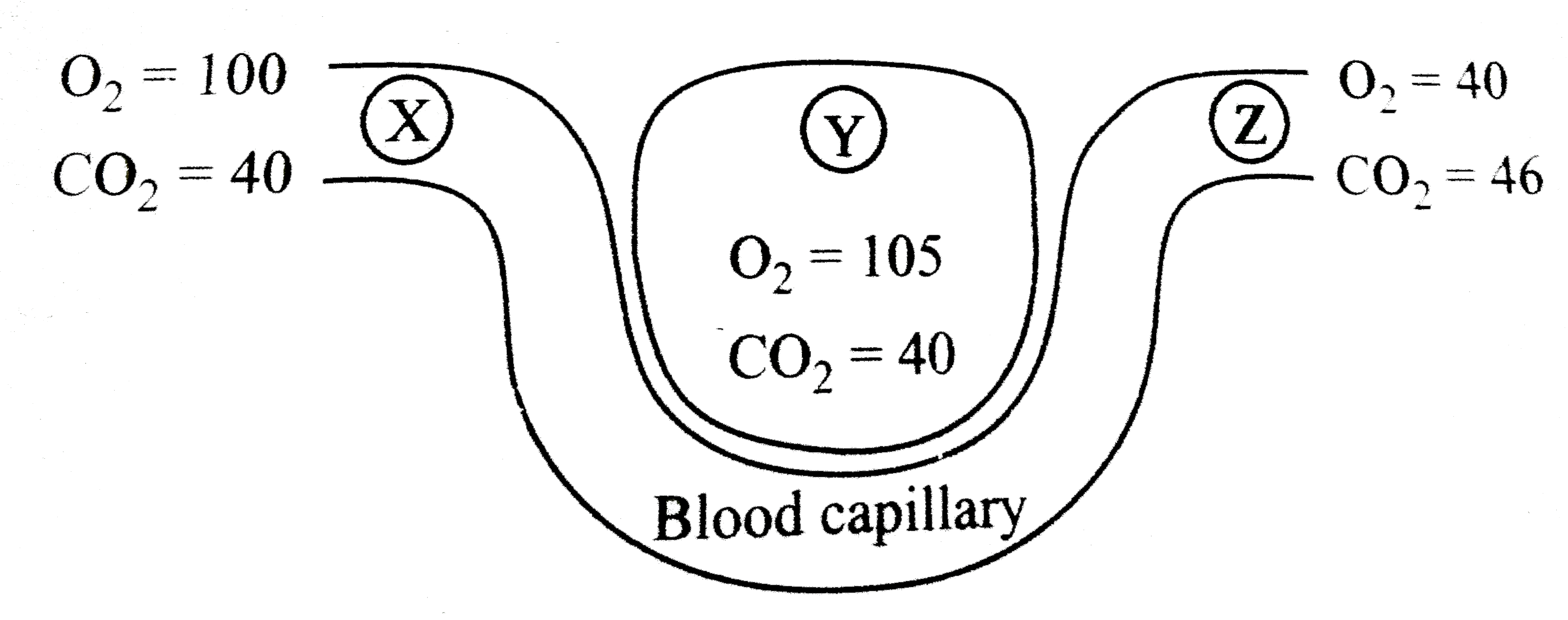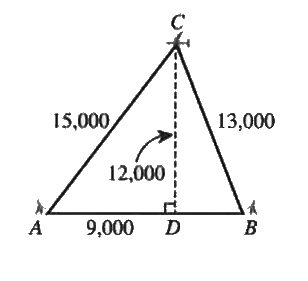External respiration allows the exchange of carbon dioxide for oxygen at any altitude which of the following is not an adaptation to living high above the sea level ?
an increase in 2,3 bpg concentration which shifts the O2 dissociation curve to the right
increased production of red blood cells by the bone marrow
decreased synthesis of erythropoetin by the kidney
hyperventilation
The correct Answer is:C
To solve the question regarding adaptations to living at high altitudes, we need to analyze each option provided in the context of how the body responds to lower oxygen levels at high altitudes.
1. Understand External Respiration: External respiration is the process of exchanging gases (oxygen and carbon dioxide) between the atmosphere and the blood. At high altitudes, the availability of oxygen decreases, which necessitates certain adaptations in the body to maintain oxygen supply.
2. Evaluate the First Option - Increase in 2-3 BPG Concentration:
- 2,3-Bisphosphoglycerate (2,3-BPG) is a compound that helps hemoglobin release oxygen more readily to tissues.
- At high altitudes, the concentration of 2,3-BPG increases, facilitating better oxygen delivery despite lower atmospheric oxygen levels.
- Conclusion: This is an adaptation to high altitude.
3. Evaluate the Second Option - Increased Production of RBC by the Bone Marrow:
- Red blood cells (RBCs) are responsible for carrying oxygen in the blood.
- At high altitudes, the body compensates for lower oxygen availability by producing more RBCs, which increases the oxygen-carrying capacity of the blood.
- Conclusion: This is also an adaptation to high altitude.
4. Evaluate the Third Option - Decreased Synthesis of Erythropoietin by the Kidney:
- Erythropoietin (EPO) is a hormone produced by the kidneys that stimulates the production of RBCs in the bone marrow.
- At high altitudes, the body needs more RBCs to cope with reduced oxygen levels, which means there should be an increase in erythropoietin production, not a decrease.
- Conclusion: This is not an adaptation to high altitude.
5. Evaluate the Fourth Option - Hyperventilation:
- Hyperventilation is an increase in breathing rate that occurs in response to lower oxygen levels.
- This physiological response helps to increase oxygen intake and is a common adaptation to high altitudes.
- Conclusion: This is an adaptation to high altitude.
Final Answer:
The option that is not an adaptation to living high above sea level is: Decreased synthesis of erythropoietin by the kidney.
---
- 2,3-Bisphosphoglycerate (2,3-BPG) is a compound that helps hemoglobin release oxygen more readily to tissues.
- At high altitudes, the concentration of 2,3-BPG increases, facilitating better oxygen delivery despite lower atmospheric oxygen levels.
- Conclusion: This is an adaptation to high altitude.
- Red blood cells (RBCs) are responsible for carrying oxygen in the blood.
- At high altitudes, the body compensates for lower oxygen availability by producing more RBCs, which increases the oxygen-carrying capacity of the blood.
- Conclusion: This is also an adaptation to high altitude.
- Erythropoietin (EPO) is a hormone produced by the kidneys that stimulates the production of RBCs in the bone marrow.
- At high altitudes, the body needs more RBCs to cope with reduced oxygen levels, which means there should be an increase in erythropoietin production, not a decrease.
- Conclusion: This is not an adaptation to high altitude.
- Hyperventilation is an increase in breathing rate that occurs in response to lower oxygen levels.
- This physiological response helps to increase oxygen intake and is a common adaptation to high altitudes.
- Conclusion: This is an adaptation to high altitude.
The option that is not an adaptation to living high above sea level is: Decreased synthesis of erythropoietin by the kidney.
Topper's Solved these Questions
Similar Questions
An altimeter is an aneroid barometer which makes use of the change in atmospheric pressure with the change in height above the sea level (altitude).
How does the atmospheric pressure change with increase in height above the sea level?
View SolutionLess oxygen due to high levels of carbon dioxide
is called
View Solution
Knowledge Check
The given diagram shows a blood capillary in close contact with structure Y. The relative concentration (in units) of carbon dioxide (CO2) and oxygen (O2) are given at three different sites.

Which of the following statements is correct ?Aa) Y is an alveolus and blood flow is from X to ZBb) Y is an alveolus and blood flow is Z to XCc) Y is a muscle and blood flow is from X to ZDd) Y is a muscle and blood flow is from Z to XThe bottom of a ske slope is 6,500 feet above sea level,the top of the slope is 11,000 feet above sea level, and the slope drops 5 feet vertically for every 11 feet traveled in the horizontal direction. From the top of the slope, Kayla skis down at an average speed of 30 miles per hour. Which of the following function gives the best estimate for the distance above sea level, d, Kayla is t seconds after she begins her ski run where 6,500<d<11,000?
Ad(t)=11,000−(15011)tBd(t)=11,000−2.2tCd(t)=11,000−20tDd(t)=4,500−1,200tIn the figure below, a highway rest area (at D) and radar stations (at A and B) lie on a level east-west line, A is 9,000 feet due west of D. An airplane (at C) is shown directly above the rest area, flying due west at a constant speed of 300 feet per secod and at a constant altitude of 12,000 feet. The airplane is located at a straight-line distance of 15,000 feet from the radar station at A and 13,000 feet from the radar station at B.

Which of the following values is closest to the number of seconds it will take for the airplane to fly from C to the point directly above the radar station at A?A17B30C40D43
The vapour of an organic compound requires three times its own volume of oxygen for complete combustion and produces twice its own volume of carbon dioxide . Which of the following compounds would give these results ?
View SolutionThe following are the two statements regarding carbon dioxide:
(a) Carbon dioxide produced during cellular respiration must be eliminated from the body.
(b) Carbon dioxide reacts with water to form carbonic acid and thus increases pH.
Of the above statements, which one of the following options is correct
View SolutionFollowing is a tabular respresentation of partial pressure (in mmHg ) of oxygen and carbon dioxide at different parts involved in diffusion in cmparison to those in atmosphere :

Choose from the option which correctly fills up the values A,B,C,D
and E
View SolutionExcess inventory, a massive problem for many businesses, has several causes, some of which are unavoidable. Overstocks may accumulate through production overruns or errors. Certain styles and colors prove unpopular. With some products computers and software, toys, and books last year's models are difficult to move even at huge discounts. Occasionally the competition introduces a better product. But in many cases the public's buying tastes simply change, leaving a manufacturer or distributor with thousands (or millions) of items that the fickle public no longer wants.
One common way to dispose of this merchandise is to sell it to a liquidator, who buys as cheaply as possible and then resells the merchandise through catalogs, discount stores, and other outlets. However, liquidators may pay less for the merchandise than it cost to make it. Another way to dispose of excess inventory is to dump it. The corporation takes a straight cost write-off on its taxes and hauls the merchandise to a landfill. Although it is hard to believe, there is a sort of convoluted logic to this approach. It is perfectly legal, requires little time or preparation on the company's part, and solves the problem quickly. The draw back is the remote possibility of getting caught by the news media. Dumping perfectly useful products can turn into a public relations nightmare. Children living in poverty are freezing and XYZ Company has just sent 500 new snowsuits to the local dump. Parents of young children are barely getting by and QPS Company dumps 1,000 cases of disposable diapers because they have slight imperfections. The managers of these companies are not deliberately wasteful, they are simply unaware of all their alternatives.
In 1976 the Internal Revenue Service provided a tangible incentive for businesses to contribute their products to charity. The new tax law allowed corporations to deduct the cost of the product donated plus half the difference between cost and fair market selling price, with the proviso that deductions cannot exceed twice cost. Thus, the federal government sanctions-indeed, encourages-an above-cost federal tax deduction for companies that donate inventory to charity.
What does the author say about the common ways to dispose of excess merchandise and inventory? Which of the following combination of sentences best summarizes the answer?
View SolutionThe masses of carbon, hydrogen and oxygen in ann organic compound are in the ratio 6:1:8 respectively. Which of the following pairs of formulae correspond to above information?
View Solution
